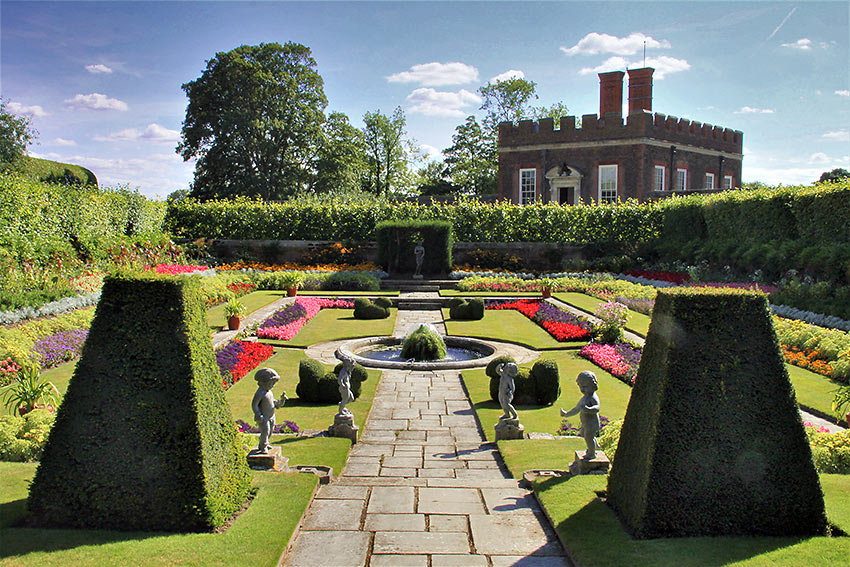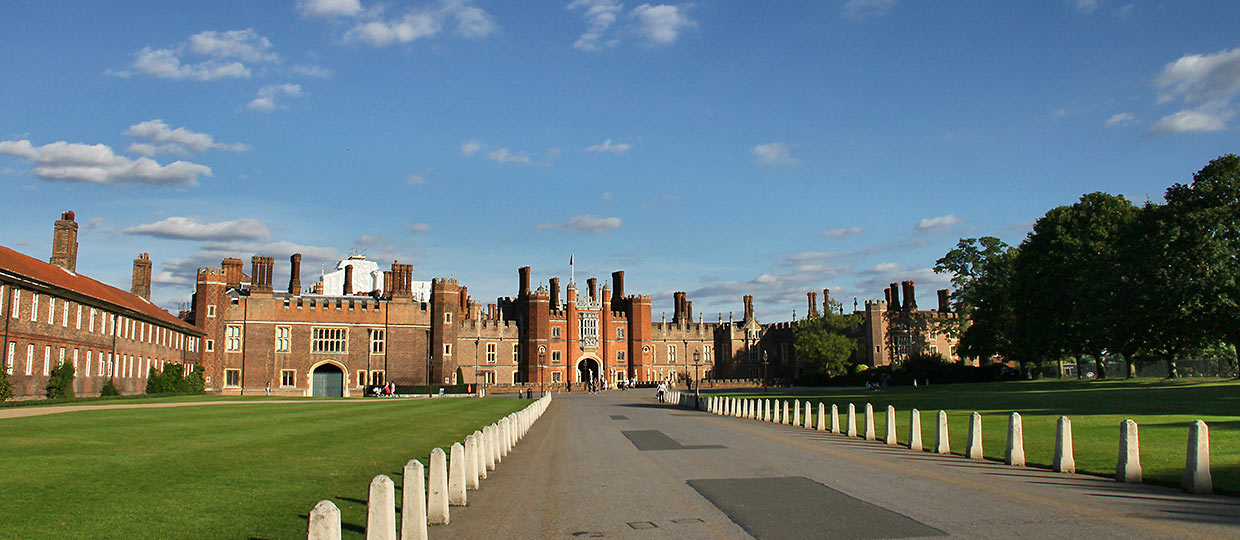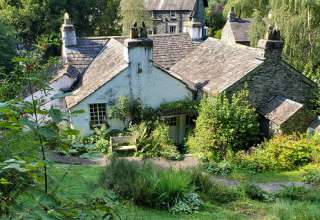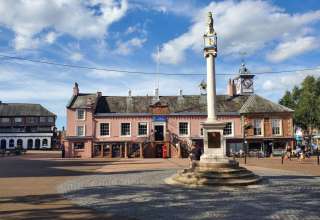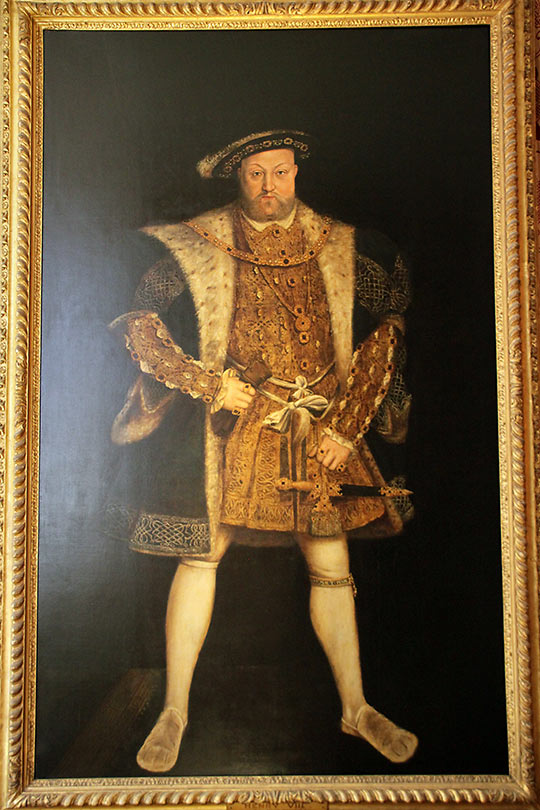
When one invokes images of English King Henry VIII they’re generally of an obese and egoistical king, who was no stranger to the royal casting couch, despite his marrying a number of his conquests. But this is not the Henry of early years; an avid hunter and sportsman, a helpless romantic, sublime dancer, and highly educated man who composed his own songs and played numerous musical instruments. Henry was in born in 1491, the second son of King Henry VII. He was once a tall and slender man, considered physically attractive and charismatic. But a tragic jousting accident led to a life-long, unhealed wound on his leg, ending his physical days of sport, dancing, and hunting. Plus, he was confronted with daily excruciating pain that added greatly to his discomfort in walking and gruff demeanor.
The world’s best surgeons could find no solution. His metabolism changed too, and with his preference of feasting on wild game, generally served in fattening pies, then washed down with gallons of wine to help subside the pain, he became a whale of a man, best known today by his royal portraitures. Henry was also a man who never ate his vegetables, dismissing anything dug from the ground as suitable to only the common man. No English King, though, was more responsible for laying the groundwork for making the British Empire the world’s greatest power, lasting for two-hundred years.
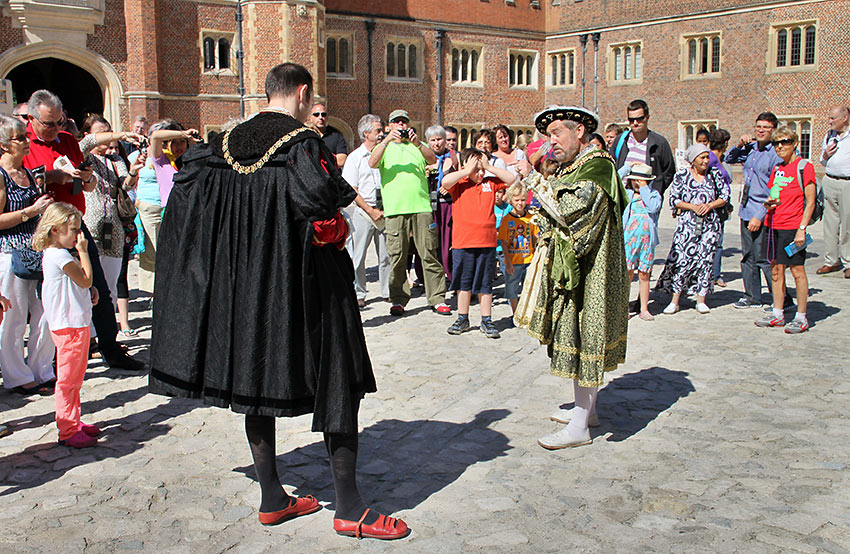
Henry VIII is considered the ‘father of the Royal Navy,’ building up the fleet to 50 or so vessels, despite the embarrassing premier of his first vessel sinking in the River Thames due to the extra weight of heavy armament
He also instituted new weaponry, armor and longbow archery competitions, which he would incorporate into his army, making the archers a highly-skilled and terrifying adversary to their enemies.
Henry’s third marriage was to lady-in-waiting, Jane Seymour, who finally produced the son he desperately desired, Edward, in 1537. Sadly, Jane Seymour died after childbirth. Henry ordered a queen’s funeral, and is buried next to her in St. George’s Chapel at Windsor Castle. As part of the Tudor dynasty, King Henry VIII ruled England from 1509 to 1547.
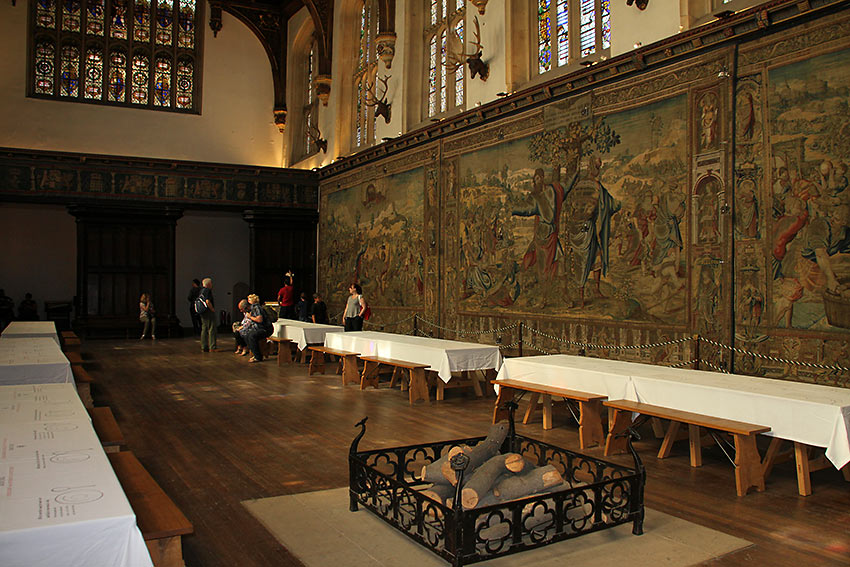
Henry VIII & Hampton Court Palace
With the death of his Henry’s elder brother, he became heir to the English throne, but was considered unfit to rule at the age of 10. Cardinal Thomas Wolsey was awarded the title of Lord Chancellor, and stepped in to rule the nation and amassed a considerable fortune. Sparing no expense, Wolsey built the original Tudor palace, Hampton Court Palace, along the Thames, then on the outskirts of London. It was considered the finest palace in England. Henry was soon anointed king, and, in the Tudor tradition, married the widow of his brother, Katharine of Aragon from Spain. When Katharine, now in her 40s, was unable to produce a male heir, he turned his eyes on one of Katharine’s ladies-in-waiting, Anne Boleyn. He instructed Wolsey to ask Pope Leo X to annul his first marriage, but when Wolsey failed to succeed in this impossible task, Henry broke with the church and married the now pregnant Anne Boleyn. Henry was excommunicated from the church, and the English reformation began where he appointed himself as head of the Church of England.
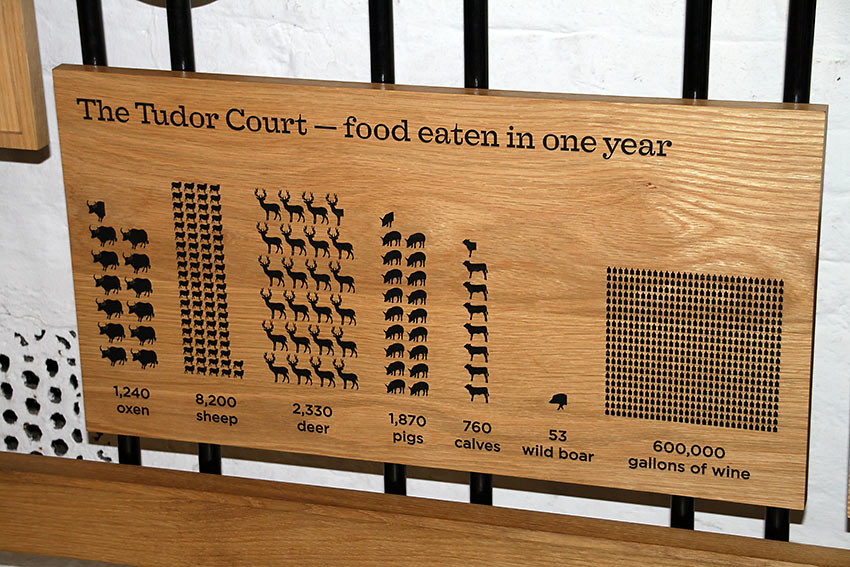
Hampton Court attracted Henry’s attention, and Woolsey, who had fallen out of his favour, wisely gifted him the palace. Henry was a lavish spender, always in need of income, so he ordered that 800 well-funded monasteries be disbanded and their lands and treasures taken for the crown. No expense was too much for Henry as he began to enlarge Hampton Court. He already owned over sixty houses and palaces, yet few were large enough to hold or feed his assembled court of 1,000 subjects. A vast kitchen was built, quadrupling the original size. The renovation of the palace followed the design by Wolsey’s Gothic Tudor and Baroque architectural-style, adorned with Renaissance ornaments.
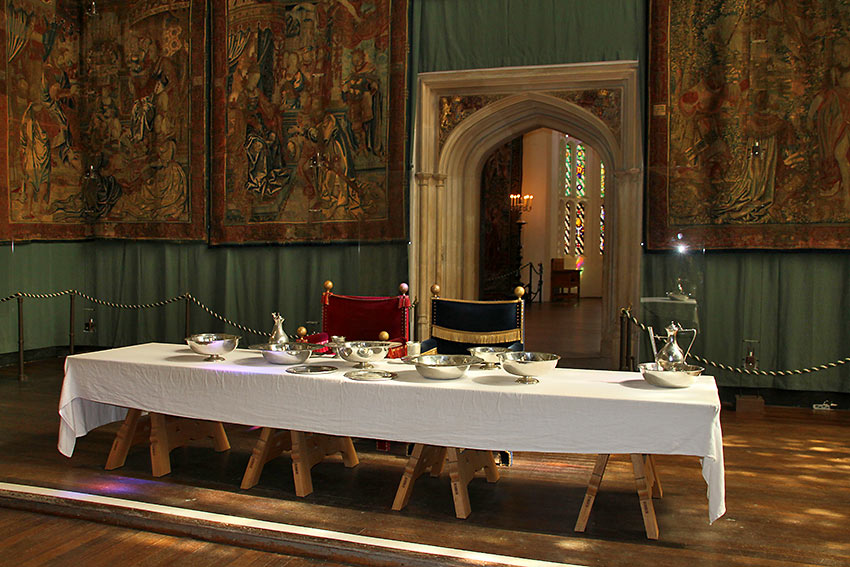
Henry used Hampton Court to demonstrate magnificence and power through lavish banquets, extravagant court life and expensive art. By the 1530s, Hampton Court became a palace, a hotel, a theatre and a vast leisure complex. It was Henry’s favorite royal residence, and only two of his surviving ones.
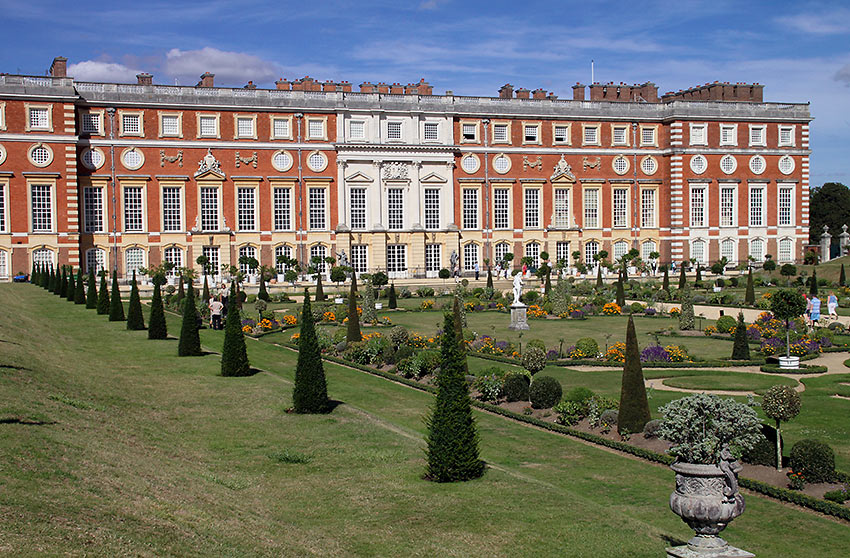
The palace was once again renovated and enlarged by architect, Christopher Wren, when King William III and Mary II (1689-1702) took the throne in 1689. A highpoint is the formal Baroque landscape with its radiating avenues, fountains and gardens.
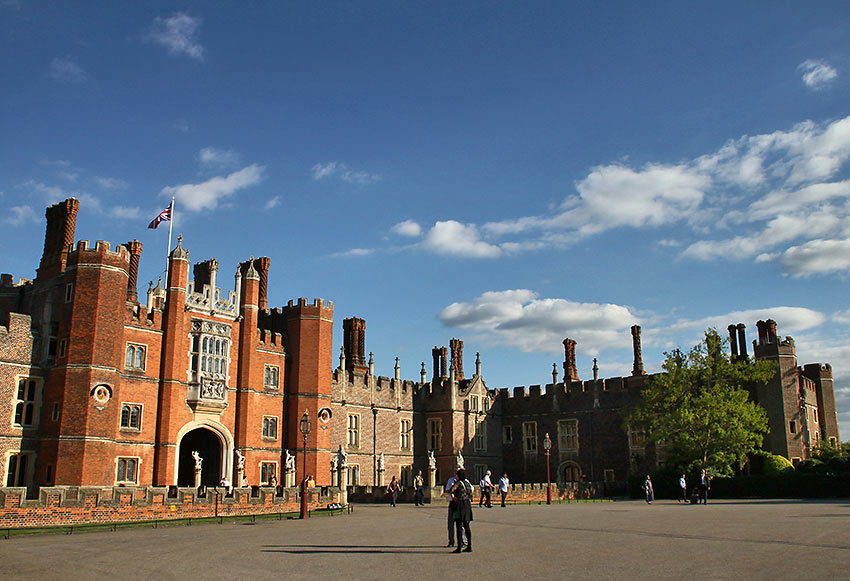
Once iiside, I was confronted with the lavish use of half-timber, rectangular and bay windows, carved wood paneled walls, lavish moldings and design. Two staircases lead to the 106 ft. long and 40 ft. wide Great Hall banquet room where Henry would ‘play’ the role of a Renaissance monarch. The hall features a spectacularly decorated hammer-beam, and walls covered by Henry’s most treasured tapestries. I was pleasantly surprised to find everything so accessible, making it easy to become part of the experience. I felt like a monarch by literally sitting at Henry’s place at the grand table, or laying down in a large sleeping room, which I assumed was for less distinguished guests, for there was only straw on the floor as bedding.

Not to be missed are the royal tennis courts where Henry would play, and the Chapel Royal, with its magnificent vaulted ceiling, where he would pray. Also on display are works of art from the Royal Collection. Was King Henry VIII the king of consumption? You can join the guided King’s cook tours to find out, as well as be part of many other tours. Hampton Court is easy to get to, just 12 miles southwest and upstream of central London It’s also fairly inexpensive for what you receive, plus the very essential London Pass is accepted, the only way to see London.
For further information, visit the Hampton Court web page.
